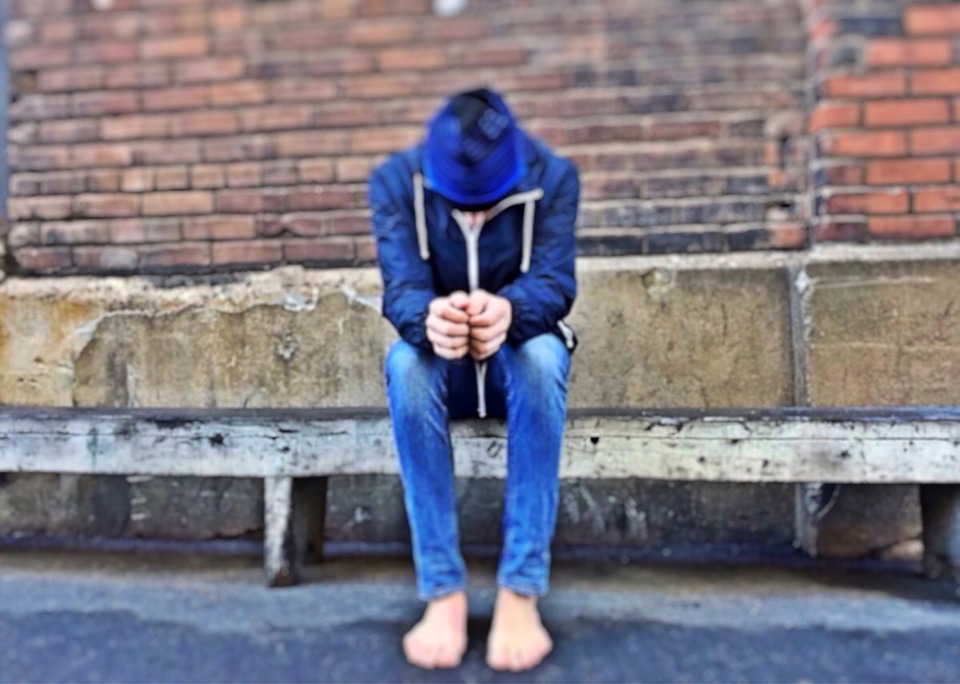Recent media reports pointing to the toxic effects of Spice on users and communities have called for immediate action from local and government authorities to mitigate the damages and sanitise public space. But years of state-enforced austerity reveal so-called ‘drug epidemics’ as just the symptom of deeper, structural economic problems and inequalities. Not least, also of a general condescending attitude towards the poor and less fortunate.
Spice is the umbrella-term for a wide range of synthetic cannabinoids or synthetic cannabinoid receptor agonists (SCRAs), chemicals that mimic and generally amplify the psychoactive qualities of naturally-occurring cannabis. These and other ‘novel psychoactive substances’ (NPS) or ‘legal highs’ have been specifically targeted by new drug legislation introduced last year by the Home Office. The Psychoactive Substances Act 2016 was effectively meant to create a ‘blanket ban’ on all NPS and establish a legal framework that could allow for a more efficient policing of any emerging drugs not controlled through existing schedules. Experts predicted, however, that this could cause a displacement effect, not necessarily reducing supply but pushing NPS from retail outlets (‘head shops’) onto street dealers, potentially exposing users to even more dangerous products. This now seems to be the resulting scenario and, as with a long history of other wars on drugs, the most defenceless social categories seem to be among the first casualties.
This week, the local Manchester press began running a series of stories on the “horrifying human devastation and chaos wreaked by the ‘zombie’ drug Spice”. It described the largely homeless users of the drug(s) as “pale, wasted figures caught in a Spice nightmare” and Piccadilly Gardens, the scene of Spice-dealing in the city centre, as “hell on earth”. Such news narratives mainly exploit the emotional angle of the discomfort caused by the presence and increased visibility of drug users to passers-by and communities. They largely fail to interrogate the chronic poverty and systemic deprivations that bring about the dehumanising conditions which turn drugs into the most-at-hand refuge from the grim realities of life at the margins. For example, the same media outlet writing about SCRAs as ‘the latest scourge on the streets’ or ‘viciously addictive’ estimated in January that rough sleeping has quadrupled in the Great Manchester area since 2010, when austerity cuts began to be felt.
‘Legal highs’ and the drug news
Sensationalism and pathological metaphors portraying users as dangerous ‘others’ are by no means a novelty in the mainstream media reporting of emerging drug markets. Drawing on my own research on the drug news and the grassroots realities of substance use, I suggest that the group identity of who the ‘victims’ are (or are perceived to be) tends to also shape the symbolic language of how specific harms are depicted in response to novel drugs. This becomes obvious when comparing media depictions of Spice with those of the NPS or ‘legal high’ responsible for the previous major drug scare in the UK. In April 2010, mephedrone was banned after months of intense news reporting associating it (erroneously, for the most part) with fatalities among partying youths or various episodes of antisocial behaviour – most famously of a teenager who had purportedly ripped his scrotum off while binging on the drug.
Analysing the content and rhetorical tone of over a hundred tabloid news items covering mephedrone, I was able to observe that the drug was mainly deemed problematic because of its presumed capacity to seduce and threaten what might be understood as naïve or gullible youth – ‘carefree’ teenagers too immature to understand danger and too innocent to have developed a moral conscience that could tell apart right from wrong. This is a historical pattern also observed in the case of other moral panics around drugs, such as MDMA. It touches on middle-class cultural sensitivities around normative values of self-discipline and risk-aversion. In this sense, potentially harmful drugs as a threat and disruption of ‘clean’ or ‘valuable’ youth and of its future also symbolise an existential threat to the future of the larger social body and its rational order.
Drugs and moral indignation
Collective anxieties also coagulate around underclass victims and drug cultures but in a different symbolic register. Media language depicts users of the ‘harder’ drugs that leave visible marks on the body and generally intersect with poverty and abject living conditions – heroin, crack cocaine, crystal methamphetamine and now Spice – as risk-bearing ‘outsiders’. Likening Spice users to ‘zombies’ (empty shells devoid of reason and own will) provides a facile scapegoat in the person of the morally weak addict whose ‘diseased brain’ is to blame for his/her descent into misery, obscuring the larger socio-economic conditions that push the already vulnerable over the edge. Unlike ‘valuable’ youth worth protecting and preserving, rough sleepers, imprisoned offenders or lower class welfare recipients are more easily portrayed as less rational and superfluous. They also appear to be more disposable, their condition easier to dismiss as the result of weak character and poor choices.
Without doubt, Spice and other NPS have caused considerable harm to users and others around them. This should not shove aside, however, a more robust and critical debate about welfare cuts and the systematic dismantling of social security nets. Such measures have seen millions struggling to make ends meet or relying on food banks for survival and many plunging into mental health problems. Slashing entitlements as the fix-all dogma in public policy today risks further aggravating all these problems. We should never accept a society where drugs and other ways of coping with adverse circumstances are the prime source of moral outrage, whereas homelessness, extreme poverty and lack of life opportunities are perfectly acceptable.
Liviu Alexandrescu is an independent academic focusing on Novel Psychoactive Substances, media representations and practices of use.


